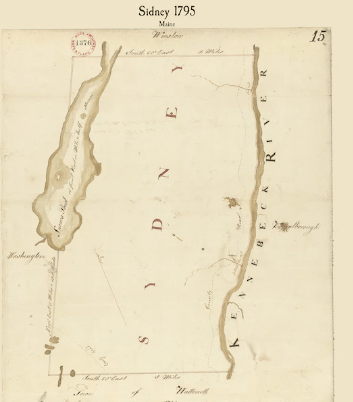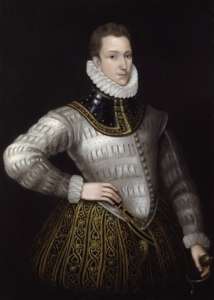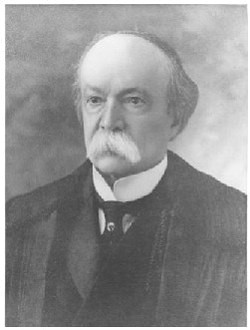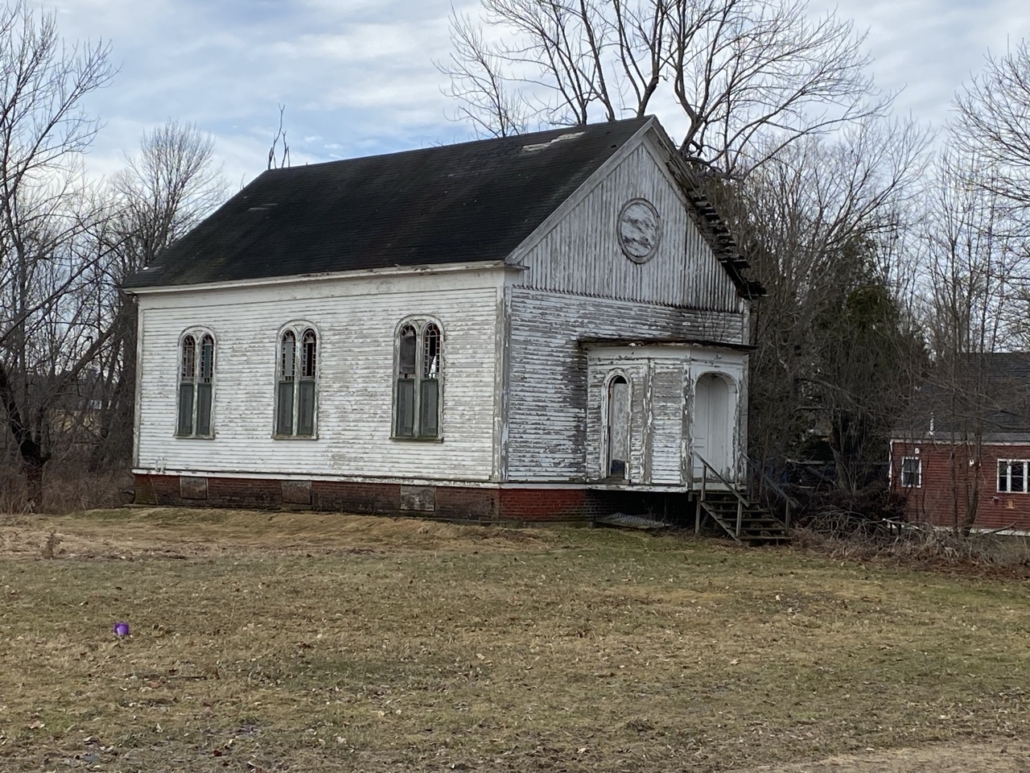Up and down the Kennebec Valley: Sidney
 by Mary Grow
by Mary Grow
The town on the west bank of the Kennebec River south of Waterville that is now Sidney began as part of Vassalboro, the town on the east bank.
There seems to be unanimous agreement among historians that Sidney was incorporated as a separate town on Jan. 30, 1792, and that it was named after the British courtier, man of letters and soldier Sir Philip Sidney (1554-1586). (See box.)
The historians your writer found are equally unanimous in their silence on two topics: why Sidney separated from Vassalboro, and why the new town was named in honor of a 200-years-dead Englishman.
Two important sources your writer consulted are Alma Pierce Robbins’ 1971 history of Vassalboro and Alice Hammond’s 1992 history of Sidney. Both wrote about the Native Americans who lived along that stretch of the Kennebec and the Europeans who supplanted them.
Hammond, focused on the west bank of the river, repeated two legends about the Natives, one that indicated that swimming across Messalonskee Lake was a test of hardihood for young Natives, boys and girls alike.
Messalonskee Lake, aka Snow Pond, was once entirely in western Sidney and is now shared by Sidney and Belgrade, the next town west. It is more than eight miles long and makes up about the northern two-thirds of Sidney’s west boundary.
Hammond, again quoting the collector of legends, wrote that the name Messalonskee came from the Native word “muskalog,” or giant pike (still known as a muskellunge or muskie). Wikipedia says the alternate name Snow Pond recognizes Philip Snow, a settler there in 1774.
(Another important wet area is the Great Sidney Bog, in the southern end of town. In William D. Williamson’s 1832 History of the District of Maine, he wrote that Sidney covered 20,000 acres, “of which 1,000 is a bog.”
(Hammond, in 1992, said the bog covered 640 acres, two-thirds in Sidney and the rest in Augusta. An on-line State of Maine website calls the bog an area of statewide ecological significance, a 605-acre example of a Raised Level Bog.)
In her Vassalboro history, Robbins gave the 1761 survey by Nathan Winslow as the Kennebec Proprietors’ action that spurred settlement on the Vassalboro section of the Kennebec. Early family names she mentioned include Bacon, Faught, Lovejoy and Marsh.
“The land transactions in Vassalboro were in the beginning more active on the west side of the river,” Robbins wrote. One reason she gave was the streams that flowed into the Kennebec from the west and were dammed to provide water power for sawmills and grist mills.
Henry Kingsbury, in his Kennebec County history, gave a second reason, Sidney’s “superior attractions for settlement.”
“After inspecting the adjacent sections on either side, an observer must have been agreeably impressed, then as now, with its comparatively level surface and the infrequency of rugged hills and still more rugged rocks,” he wrote.
For the prospective farmer, he continued, “The soil on the eastern half, that borders the river, is very favorable for cultivation and the production of grain and grass, but not as well adapted to fruit trees as the western half, in which apples are a staple crop.”
He also praised the “variety and enormous growth” of the forests, which kept mills busy “for more than half a century”; and recognized the value of the river as a transportation artery for farm and forest products.
After Vassalboro was incorporated on April 26, 1771, Robbins wrote that the first town meeting was held May 22, 1771, at James Bacon’s. She described him as “physician and innkeeper.” He is referred to in various sources as Dr. James Bacon and as James H. Bacon; your writer thinks these references are all to the same man.
Robbins did not say on which side of the Kennebec James Bacon had his tavern. Michael Denis, in his extensive Bacon genealogy, says it was on the west – Sidney – side; and your writer has found supporting evidence.
Dr. James Bacon was born June 30, 1738, in Billerica, Massachusetts. On Sept. 23, 1764, in Hallowell, he married Abigail Marsh, born in Menden, Massachusetts, Nov. 24, 1747. Her father, John Marsh, had come to what would become Sidney in 1760; in 1763, Denis wrote, Bacon received a land grant in future Sidney.
Between 1767 and 1790, Familysearch says, the James Bacons had seven daughters and three sons (other sources list fewer children). They named their oldest daughter, who was born in 1767 and died in 1812, Abigail. Her birthplace is given as Kennebec, Maine, and she married a Vassalboro man in 1786.
The oldest son was James Josiah Bacon, born in 1770 and died in 1834. Familysearch says he was born in Vassalboro and married a Vassalboro woman in 1791.
At least four of James and Abigail’s children were born in Sidney, according to Familysearch. They were Sarah B., born in 1775 (and died in Sidney); Lydia, born in 1781 (and died in Sidney); William Marsh, born Sept. 22, 1782 (and was married and died in Sidney); and Ebenezer, born in 1788. Hannah, born in Maine about 1778, died in Sidney (Find a Grave has a photo of her gravestone in Sidney’s Field Cemetery; it says she died June 11, 1867, age 89).
James Bacon’s older brother, Ebenezer Bacon, was definitely a Sidney resident. Robbins cited a July 14, 1773, deed to him from the Kennebec Proprietors for 500 acres “lying on the West side of the Kennebec River.”
Ebenezer Bacon was born in Bedford, Massachusetts, on Sept. 15, 1736, and married Abigail Farwell (1734-1817), in Boston, in 1762. She was the widow of Levi Richardson, whom she had married in Woburn, Massachusetts, in 1753.
Ebenezer and Abigail had at least two daughters and two sons, born between Jan. 1, 1763 and Aug. 23, 1770; Familysearch says all four were born in Sidney. The older boy was Ebenezer Bacon Jr., born in 1765; the younger girl, born in 1770, was Abigail.
The senior Ebenezer died Feb. 12, 1798, in Sidney. Abigail died in Vassalboro in September 1817.
Robbins summarized what she considered major actions at that first Vassalboro town meeting in 1771, and at following ones. Among decisions pertinent to Sidney were a spring 1773 vote to provide “a burying ground on each side of the river”; and a November 1773 decision to build a meeting house on the “west side of the river.”
In 1786, she wrote, without further explanation: “Talk of separating the Town by the river began, the east side to keep the incorporation.” A few paragraphs later, Robbins wrote, “In 1793 the accounts between the Towns of Sidney and Vassalborough were adjusted, and Vassalborough became the east side of the Kennebec River.”
When Alice Hammond took up the story of Sidney as a separate town, she described the 1761 survey by Nathan Winslow that laid out three tiers of lots on either shore of the Kennebec. In 1774, she continued, John Jones surveyed two more tiers west of the original three, “completing the survey from the Kennebec River west to Lake Messalonskee.”
Between the two surveys was a narrow strip, called a gore (many Maine towns had gores). The gore, too, was divided into lots. Hammond wrote that one of its six sections, including five of its 56 lots, was named the Bacon Tract .
Hammond found copies of land deeds from the 1770s at the Kennebec Registry of Deeds in Augusta. She listed some of the early Sidney landowners as Dr. James Bacon, Ebenezer Bacon, Abiel (alternately spelled Abial in the early documents she cited) Lovejoy, and John Marsh.
She then reprinted a Feb. 26, 1892, Kennebec Journal article listing early Sidney settlers, in recognition of the town’s 100th anniversary.
This list includes William Bacon (Sept. 22, 1782 – Oct. 15, 1852), James and Abigail’s son. The newspaper writer said:
“Mr. Bacon kept a tavern in the house that sits where Carlos Hammond now [1892] lives and it is said used to dispense ‘New England rum’ at a ‘four pence ha’penny’ a glass. It was from him that Bacon’s Corner takes its name.”
An on-line map shows Bacon’s Corner in south central Sidney, west of Interstate 95, the four-way intersection of Dinsmore and Shepherd roads with Middle Road.
Sidney’s first town meeting, Hammond said, was called by Abial Lovejoy, constable, at David Smiley’s. Smiley she described as an “inn keeper on the River Road,” the closest to the Kennebec of several north-south roads through Sidney.
Hammond did not date the first meeting, but it was early in 1792, because the second one was in May of that year, she said. Voters at that meeting chose a four-man committee to settle accounts with Vassalboro.
Hammond said nothing more about the committee, but apparently its work succeeded, since Robbins was able to report that the towns’ accounts were settled in 1793.
Sir Philip Sidney
Wikipedia’s long article on Sir Philip Sidney calls him a “poet, courtier, scholar and soldier who is remembered as one of the most prominent figures of the Elizabethan age.”
He was born Nov. 30, 1554, at Penshurst Place, a still-standing medieval castle 32 miles southwest of London. The house, built in 1341, had been in the family since 1552, when King Edward VI granted it to Sidney’s grandfather.
Sidney was the oldest of at least three children. Educated at Christ Church, part of Oxford University, he went on his first diplomatic mission at age 18, one of a delegation that failed to arrange a marriage between Queen Elizabeth and a son of the French King Henry II.
(Readers may remember that Elizabeth I, who reigned from 1558 to 1603, was known as “the virgin queen” – she never did marry.)
After three years in Europe, Sidney returned to England where, Wikipedia says, he occupied himself with “politics and art,” including terms in Parliament in the 1580s. Simultaneously he was active in the military, fighting for the Protestant cause in Ireland in 1575 and 1576 and in the Netherlands in 1585 and 1586.
His literary works included a collection of poems, a romance and a critical work on poetry. The Wikipedia writer considered the last two influential in the subsequent development of English literature.
Queen Elizabeth knighted Sidney in 1583. The same year, he married Frances Walshingham, 16-year-old daughter of the Queen’s principal secretary; they named their daughter, born in 1585, Elizabeth.
On Sept. 22, 1586, Sidney was wounded at the Battle of Zutphen in the Netherlands, where English troops were supporting Dutch Protestants against Spanish Catholics. He died of gangrene on Oct. 17, aged 31.
Main sources
Denis, Michael J., Families of Oakland, Maine December 2023 found on line.
Hammond, Alice, History of Sidney Maine 1792-1992 (1992).
Kingsbury, Henry D., ed., Illustrated History of Kennebec County Maine 1625-1892 (1892).
Robbins, Alma Pierce, History of Vassalborough Maine 1771 1971 n.d. (1971).
Websites, miscellaneous.
Responsible journalism is hard work!
It is also expensive!
If you enjoy reading The Town Line and the good news we bring you each week, would you consider a donation to help us continue the work we’re doing?
The Town Line is a 501(c)(3) nonprofit private foundation, and all donations are tax deductible under the Internal Revenue Service code.
To help, please visit our online donation page or mail a check payable to The Town Line, PO Box 89, South China, ME 04358. Your contribution is appreciated!





Leave a Reply
Want to join the discussion?Feel free to contribute!